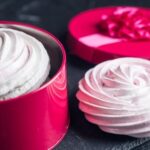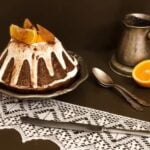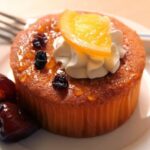Fondant cake decorations have become increasingly popular in the world of baking and cake decorating. These edible creations can add a touch of elegance and personality to any cake, making it truly one-of-a-kind. In this article, we will explore how to make fondant cake decorations from scratch, providing step-by-step instructions and helpful tips along the way.
But first, let’s understand what fondant actually is and why it is used in cake decorations. Fondant is a type of icing that has a smooth and pliable consistency. It is made from sugar, water, and various other ingredients to give it elasticity and stability. Unlike buttercream or whipped cream frosting, fondant can be rolled out like dough and molded into different shapes.
Fondant is favored by many bakers for its versatility and sleek appearance. It allows for precise detailing, making it perfect for intricate designs and decorations on cakes. With fondant, you can create anything from delicate flowers and elegant bows to whimsical animals or even 3D objects. Its smooth texture also provides a flawless canvas for painting or embossing designs onto the surface.
Now that we have an understanding of what fondant is and why it is used in cake decorations, let’s dive into the materials and tools needed to get started in our next section.
Materials and Tools
To create fondant cake decorations, you will need a variety of materials and tools to ensure a successful outcome. Here is a comprehensive list of the items you will need:
- Fondant: The main ingredient for creating cake decorations, fondant can be purchased pre-made or made from scratch using ingredients such as powdered sugar and marshmallows.
- Rolling Pin: A rolling pin is essential for rolling out the fondant to achieve the desired thickness for your decorations.
- Fondant Cutter/Shape Cutters: These tools come in various shapes and sizes and are used to cut out specific shapes from the rolled fondant. Alternatively, a sharp knife can also be used.
- Fondant Smoother: This tool helps to smooth out any wrinkles or air bubbles that may form on the surface of the fondant while working with it.
- Edible Glue: Edible glue is used to attach different pieces of fondant together or to adhere them to the cake itself. It can be purchased or made by mixing together water and tylose powder/cornstarch until it forms a paste-like consistency.
- Food Coloring: Gel-based food coloring is recommended for tinting your fondant as it provides vibrant colors without adding excess moisture to it.
- Paintbrushes: A set of small paintbrushes can be useful for adding fine details or painting on color accents to your fondant decorations.
- Embossing Tools: These tools create impressions and textures on the surface of the fondant, adding depth and visual interest to your decorations.
- Piping Bags/Tips: If you plan on creating intricate designs using piped royal icing or buttercream, piping bags and tips will be necessary.
- Cornstarch/Powdered Sugar: These powdery substances are used to prevent sticking when working with fondant, particularly while rolling it out or molding smaller details.
- Foam Pads/Ball Tools: These tools are helpful for shaping and forming fondant flowers, leaves, and other 3D elements by providing a soft surface to work on.
- Ribbon or Fabric: If you wish to incorporate ribbon or fabric into your cake decorations, choose materials that are food-safe and compatible with fondant.
- Optional Decorative Accessories: Depending on the desired design, additional accessories such as edible glitter, pearls, beads, or edible markers can be used for added sparkle and detail.
By making sure you have all the necessary materials and tools before beginning your fondant cake decoration project, you will be well-prepared to create beautiful and visually appealing designs. Remember to thoroughly clean and sanitize all tools before use to maintain food safety standards.
Preparing the Fondant
Before you can begin creating beautiful cake decorations with fondant, it’s important to properly prepare the fondant itself. This step ensures that the fondant is pliable, smooth, and easy to work with. So let’s dive into a step-by-step guide on how to prepare your fondant before starting the decoration process:
- Gather your materials: Before getting started, make sure you have all the necessary materials for preparing the fondant. This includes rolled fondant (store-bought or homemade), a clean work surface, powdered sugar or cornstarch for dusting, and a rolling pin.
- Knead the fondant: Remove your rolled fondant from its packaging and knead it gently with clean hands. Kneading helps to warm up and soften the fondant, making it more pliable. You want to knead until the fondant becomes soft, smooth, and free of any lumps or air bubbles.
- Dust your work surface: Lightly dust your clean work surface with powdered sugar or cornstarch to prevent sticking. This will make it easier to roll out the fondant without it clinging to the surface.
- Roll out the fondant: Place the kneaded fondant onto your dusted work surface and use a rolling pin to roll it out evenly. Aim for a thickness of about 1/8 inch or as desired for your specific cake decorations.
- Use cornstarch or powdered sugar as needed: While rolling out the fondant, if you notice it sticking to either your rolling pin or work surface, lightly dust them with powdered sugar or cornstarch as needed.
Remember that preparation is key when working with fondant – a well-prepared piece of fondant will make all the difference in creating flawless cake decorations later on. By following these step-by-step instructions, you’ll be ready to move on to the exciting process of creating beautiful designs with fondant.
Coloring the Fondant
Adding color to fondant is an important step in creating beautiful and eye-catching cake decorations. With the right techniques, you can achieve the perfect shades for your desired design. Here are some tips on how to effectively color fondant and create stunning cake decorations:
Gel Food Coloring
One of the best ways to color fondant is by using gel food coloring. Gel food coloring is highly concentrated, which means it won’t cause your fondant to become too sticky or wet. Start by adding a small amount of gel food coloring using a toothpick or a clean toothbrush bristle, as a little goes a long way.
Gradually knead the fondant until the color is fully incorporated. If you want a deeper shade, simply add more coloring and continue kneading until you’ve achieved your desired hue.
Pre-colored Fondant
If you’re looking for convenience or want specific colors that are difficult to achieve with gel food coloring, pre-colored fondant is a great option. It comes in various shades and can save you time and effort. Pre-colored fondant can be mixed with white fondant to create different tints or shades as needed.
Marbling Effect
Creating a marbled effect can add depth and visual interest to your fondant decorations. Start by using two or more colors of gel food coloring or pre-colored fondants. Roll each color into separate logs and twist them together gently, avoiding overmixing to maintain distinct streaks of color. Then, roll out the marbled log using your hands, keeping in mind that over-rolling may mix the colors too much and lose the desired effect.
Airbrushing
For more advanced techniques or designs that require an even gradient, airbrushing is an excellent method for coloring fondant. By using an airbrush gun and edible airbrush colors, you can achieve smooth transitions of color and create stunning effects on your fondant decorations. Practice on scrap pieces of fondant first to get comfortable with the airbrushing technique before applying it to your actual cake decorations.
Remember to always start with a small amount of coloring and gradually add more as needed. Additionally, keep in mind that the color may deepen slightly over time, so allow your fondant decorations to sit for a few hours before making any adjustments. With these techniques, you can create beautifully colored fondant decorations that will enhance the overall look of your cakes.
Basic Fondant Shapes
Creating basic fondant shapes is a great starting point for anyone looking to make their own cake decorations. These simple shapes, such as flowers, leaves, and bows, can be used to add a touch of elegance and beauty to any cake. In this section, we will provide step-by-step instructions on how to create these basic fondant shapes.
Flowers
To create a fondant flower, start by kneading the fondant until it is pliable. Roll out the fondant into a thin sheet using a rolling pin. Use flower-shaped cookie cutters or fondant cutters to cut out the desired flower shape from the fondant sheet.
Gently press down on the petals of the cut-out shape to give them dimension. To add more detail, use edible markers or food coloring mixed with clear alcohol to paint on colors or patterns onto the petals. Allow the flowers to dry before attaching them to your cake.
Leaves
Making fondant leaves is similar to creating flowers. After kneading and rolling out the fondant, use leaf-shaped cookie cutters or hand-cutting tools to create leaf shapes from the fondant sheet. If desired, use veining tools or embossing mats to add texture and veins to the leaves. Paint on details with edible markers or food coloring mixed with clear alcohol. Allow the leaves to dry before adding them as decorations.
Bows
Fondant bows can add a touch of sophistication to any cake design. Begin by rolling out a long strip of fondant into your desired width and length for the bow tails. Fold each end of the strip inward towards the center, leaving some space in between for placement on top of your cake later. Pinch together where both ends meet in order to secure it tightly together while keeping its shape intact.
Next, roll out a smaller piece of fondant and fold the two ends inward to create a loop shape. Attach this loop to the center of the bow tail strip, using edible glue or a small amount of water as adhesive. Allow the fondant bow to dry and harden before attaching it to your cake.
Creating these basic fondant shapes is a great way to start your journey into fondant cake decoration. Practice making different shapes, experimenting with colors, and adding your own unique touches. These skills will serve as a solid foundation for more advanced fondant designs that you can create in the future.
Advanced Fondant Designs
Creating advanced fondant designs allows for endless possibilities in cake decoration. With practice and patience, you can create stunning cakes that truly showcase your creativity and skill. In this section, we will explore various techniques for crafting more intricate fondant designs, including figures, animals, and 3D objects.
One technique for creating advanced fondant designs is using molds or templates. Molds are readily available in various shapes and sizes and can be used to create intricate designs with ease. To use a mold, simply press the fondant into the mold and gently remove it to reveal a perfectly shaped design.
Templates are another helpful tool that can be used to create precise designs. Simply trace the template onto rolled-out fondant and cut along the lines for a flawless design.
Another technique for advanced fondant designs is sculpting. Sculpting gives you the freedom to create custom shapes and characters without relying on molds or templates. Start by shaping a small amount of fondant into a basic form, such as a ball or cone, then gradually add more pieces of fondant to build up the desired shape. Use your hands or sculpting tools to smooth out any imperfections and add details like facial features or texture.
For those looking to elevate their fondant designs even further, consider incorporating additional materials such as edible paints or dusts, edible luster spray, or edible gold or silver leaf. These materials can be used to add depth, shine, and vibrant colors to your creations, making them truly eye-catching.
Remember that creating advanced fondant designs takes time and practice. Don’t get discouraged if your first attempts don’t turn out exactly as planned – embrace the learning process and keep experimenting with different techniques until you achieve the desired results.
With these techniques for creating more intricate fondant designs at your disposal, you’ll be able to take your cake decorating skills to new heights. The next section will delve into adding detail with embossing, painting, and texturing to further enhance your fondant decorations.
Adding Detail
Embossing
Embossing is a technique that adds texture and dimension to fondant decorations. It involves creating patterns or designs on the surface of the fondant using embossing tools or stamps. To emboss fondant, start by rolling out a thin, even layer of fondant using a rolling pin. Place the embossing tool or stamp onto the fondant and firmly press down, applying even pressure. Lift the tool or stamp carefully to reveal the embossed design.
Painting
Painting is another way to add intricate details and vibrant colors to fondant decorations. Edible food coloring can be mixed with a small amount of clear alcohol (such as vodka) or lemon extract to create a paint-like consistency. Use a fine brush to apply the colored mixture onto the surface of the fondant decoration.
Start with light layers and build up the color gradually, allowing each layer to dry before applying the next one. This technique allows for shading, highlighting, and adding fine details that enhance the overall appearance of your fondant cake decorations.
Texturing
Texturing refers to creating different textures on fondant decorations to achieve various effects, such as a wood grain pattern or fabric texture. There are various tools available specifically designed for texturing fondant, such as texture mats or impression mats. Simply press these mats onto rolled-out fondant to transfer the desired texture onto its surface. You can also use everyday items like toothpicks, combs, or fabric textures to create unique textures by gently pressing them into the fondant.
Adding intricate details through embossing, painting, and texturing allows you to take your fondant cake decorations to another level. These techniques offer endless possibilities in terms of design and creativity. Experiment with various tools and techniques until you find ones that work best for your desired results. With practice and patience, you’ll be able to create stunning fondant decorations that will impress friends, family, and clients alike.
Attaching Fondant Decorations
When it comes to adding fondant decorations onto cakes, it’s important to ensure that they are securely attached. There are several methods you can use to achieve this, including using adhesive, toothpicks, and wire. Each method has its own advantages and considerations, so let’s take a closer look at how to use them effectively.
Firstly, one of the most commonly used methods for attaching fondant decorations is using edible adhesive. Edible adhesive is a food-safe glue that helps bond the fondant pieces to the cake surface. It is typically made from a mixture of water and tylose powder or gum paste.
To use edible adhesive, simply brush a thin layer onto the back of your fondant decoration and press it firmly onto the cake surface. Allow the adhesive to dry completely before moving or transporting the cake.
Another method for attachment is using toothpicks. Toothpicks can be particularly useful when you have larger or heavier fondant pieces that need additional support. To use toothpicks, insert one or two toothpicks into the bottom of your fondant decoration where it will come into contact with the cake surface.
Then gently press or push the decoration onto the cake until the toothpick(s) are fully inserted into the cake. Be careful not to push them all the way through the cake if you intend for them to be removable.
In some cases, wire can also be used for secure attachment of fondant decorations. This method is often employed when creating 3D objects or figures that need extra stability. Ensure that you are using food-safe wire that is properly covered with floral tape before inserting it into your decoration.
Insert one end of the wire into your decoration and then wrap or bend it in a way that allows it to be firmly anchored onto the cake. Remember to inform your guests that there are wires in the cake, so they can remove them before consuming.
| Method | Description |
|---|---|
| Edible Adhesive | A food-safe glue made from water and tylose powder or gum paste. |
| Toothpicks | Used for additional support, particularly with larger or heavier fondant pieces. |
| Wire | Provides stability for 3D objects or figures, ensure it is properly covered and guests are aware. |
By using these various methods, you can securely attach your fondant decorations to your cakes and ensure they stay in place throughout serving and transportation. Experiment with different techniques to find the best method for your specific design and enjoy the process of creating stunning fondant cake decorations.
Finishing Touches
In order to truly elevate the overall look of your fondant cake decorations, it is important to pay attention to the finishing touches and add some additional embellishments. These final touches can make a big difference in the overall aesthetic appeal of your cake. Here are some suggestions for adding those finishing touches and enhancing the look of your fondant cake decorations:
- Edible Pearls or Buttons: Adding edible pearls or buttons to your fondant decorations can give them a touch of elegance and sophistication. These small, pearl-like decorations can be easily attached using edible adhesive or by gently pressing them into the fondant.
- Gold or Silver Accents: If you want to add a touch of luxury and glamour to your fondant cake decorations, consider using gold or silver accents. You can either use edible luster dust to create a metallic sheen on certain parts of your decorations, or you can even use gold or silver leaf for a more dramatic effect.
- Sparkling Sugar or Edible Glitter: For a bit of sparkle and shimmer, consider adding sparkling sugar or edible glitter to your fondant cake decorations. These additions can catch the light and give your creations an eye-catching “wow” factor.
- Airbrushing: Using an airbrush tool, you can add beautiful gradients and shading effects to your fondant cake decorations. This technique allows you to create depth and dimension, making your designs look more realistic and professional.
- Fondant Ribbons: Another way to enhance the overall look of your fondant cake decorations is by adding fondant ribbons. These ribbons can be used as borders around cakes, bows on gift-themed designs, or simply as decorative elements intertwined with other fondant shapes.
Incorporating these finishing touches will take your fondant cake decorations from ordinary to extraordinary. Remember that these suggestions are just starting points – feel free to experiment with different techniques and ideas to personalize and customize your creations.
Tips and Troubleshooting
In the process of making fondant cake decorations, it is not uncommon to encounter some challenges or issues along the way. This section will address common problems that may arise and provide helpful tips and solutions to ensure successful fondant cake decoration.
- Problem: Fondant cracking or drying out too quickly.
- Solution: If your fondant is cracking or drying out too quickly, it may be due to exposure to air or inadequate kneading. To prevent this issue, make sure to tightly wrap any unused fondant in plastic wrap or store it in an airtight container.
Additionally, thoroughly knead the fondant before using it to make it pliable and smooth. If the cracking has already occurred, you can try applying a small amount of shortening or water to the affected area and gently smoothing it out with your fingers. - Problem: Fondant sticking to the work surface.
- Solution: If your fondant is sticking excessively to the work surface, it may be because you are not using enough powdered sugar or cornstarch for dusting. Dusting your work surface generously with powdered sugar or cornstarch will help prevent sticking. You can also coat your hands with a little bit of shortening before handling the fondant to minimize sticking.
- Problem: Fondant tearing when transferring it onto the cake.
- Solution: Transferring large pieces of rolled fondant onto a cake can sometimes lead to tearing if not done carefully. One helpful tip is to roll the fondant onto a rolling pin dusted with powdered sugar or cornstarch and then unroll it over the cake. Another method is to place a piece of parchment paper under the rolled fondant, lift it up gently, and then flip it over onto the cake while removing the parchment paper slowly.
These are just a few examples of common problems that can occur when making fondant cake decorations. By being aware of these issues and applying these suggested solutions, you can overcome any challenges that may arise and create beautiful fondant cake decorations with confidence.
Common Problems and Solutions for Fondant Cake Decorations
| Problem | Solution |
|---|---|
| Fondant cracking or drying out too quickly. | Tightly wrap unused fondant and knead it thoroughly. Apply shortening or water to cracked fondant and smooth it out gently. |
| Fondant sticking to the work surface. | Dust your work surface generously with powdered sugar or cornstarch. Coat your hands with shortening before handling the fondant. |
| Fondant tearing when transferring it onto the cake. | Roll the fondant onto a rolling pin dusted with powdered sugar or cornstarch before unrolling it over the cake. Alternatively, use parchment paper for support when flipping the rolled fondant onto the cake. |
Conclusion
In conclusion, making fondant cake decorations can be a creative and rewarding process. Throughout this article, we have covered the key steps and important points to consider when working with fondant.
We began by explaining what fondant is and why it is commonly used in cake decorations. We then provided a comprehensive list of materials and tools needed for this project. Preparing the fondant properly is crucial, so we provided a step-by-step guide to ensure the best results.
Next, we discussed techniques for coloring fondant and achieving desired shades. We covered basic fondant shapes, such as flowers and bows, as well as more advanced designs like figures and 3D objects. Adding intricate details to your fondant decorations can truly elevate their appearance, so we shared useful tips for embossing, painting, and texturing.
Attaching your fondant decorations securely to the cake is essential to avoid any mishaps during transportation or serving. We gave various methods for doing so, including using adhesive, toothpicks, and wire. Lastly, we offered suggestions for finishing touches and embellishments that can enhance the overall look of your creations.
Now that you have learned all these techniques and tips for making fondant cake decorations, it’s time to put your skills to the test. Don’t be afraid to experiment with different designs and colors as you gain confidence in working with fondant. Remember to stay patient throughout the process, as practice will make perfect.
So go ahead and try your hand at making your own beautiful fondant cake decorations. The possibilities are endless, so let your creativity shine. Whether you are making them for a special occasion or simply for fun, these edible works of art will surely impress both yourself and those who have the pleasure of enjoying them on a delicious cake.

Welcome to my blog about home and family. This blog is a place where I will share my thoughts, ideas, and experiences related to these important topics. I am a stay-at-home mom with two young children. I hope you enjoy reading it! and may find some helpful tips and ideas that will make your home and family life even better!





